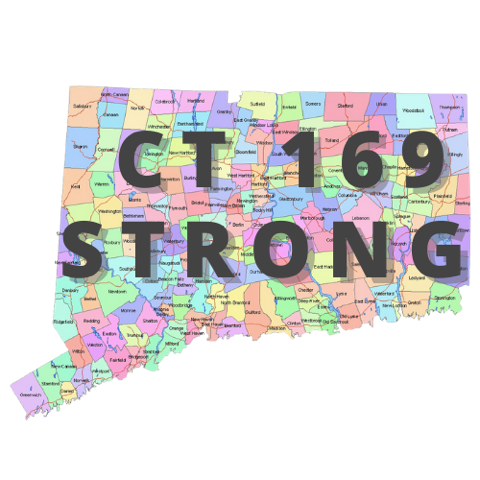
In recent days, there has been fierce debate over provisions in HB 5429 — a bill that would mandate an as-of-right green-light for builders to pack and stack housing at a minimum of 15 dwelling units per acre within the 500 acres of a half-mile radius around a train or bus station with just 10 percent of those units set aside for affordable housing. This is forced density and not about affordable housing.
Opposition to the legislation is bipartisan and predicated on serious concerns that the bill creates a centrally planned approach that makes little sense for the needs and aspirations of our unique Connecticut towns. The bill, in effect, strips away local control over zoning and land use by rubber-stamping — with no public hearings — apartment complexes in some of our towns’ most charming historic areas, many of which have aged infrastructure, limited parking, and environmental proximity to coastal waters.
In an exchange that made the rounds in statewide media, I asked a young proponent of HB 5429 during the public hearing if he believed housing is a “right.” He said yes. My refutation grabbed headlines and the editorial board of Hearst characterized my question as “completely beside the point.” Respectfully, on the contrary, my question gets to the heart of the matter.
It is exactly activists’ belief that “housing is a right” that drives their support for bills such as HB 5429 that give developers great leeway to build what these activists feel they and others are entitled to. Because housing is a thing that takes the work of others to build, the underlying claim in the belief “housing is a right” is that society can force people in the housing sector — and taxpayers — to give housing to those who need, want, or demand housing. Not doing so would be a violation of their rights.
Affordable quality housing in safe neighborhoods with jobs nearby is an important public policy goal, but there is a difference between that and a right. Rights, correctly conceived, are synonymous with freedoms that are unalienable and given by our Creator. We each have an equal right to life, liberty, pursuit of happiness, and more, like the right to freely speak one’s minds and the right to worship God as one wishes.
By contrast, housing is the result of countless voluntary exchanges shaped by the real economics of what the National Association of Home Builders’ senior VP for economics and housing policy, Dr. Robert Dietz, calls the Five L’s, as in Labor, Lots to build on, Lumber and materials, Laws and regulations, and Lending availability.
Bypassing this reality and dictating what home building must look like under the pretext that there is a “right” to housing results in policies that harm our neighborhoods and exacerbate existing policy problems, like not enough affordable housing, while creating new ones, like potential regular major flooding.
For working-class families, moving to less dense towns from denser cities is not just a temporary stopover, but often the end goal. Laws such as HB 5429 would strip away their dream under the false pretense that high housing costs are due entirely to low housing supply instead of price points that reflect the high costs of labor, land, lumber, laws and lending.
Towns should not be forced by activists to increase their housing density and alter their historical identity without their consent. Many areas with less density are intentionally that way because they provide more space for raising families, parent-involved school systems, a tangible sense of home, increased safety with less congestion, and healthier outdoor activity. The state Legislature has no business potentially depriving these localities of such attributes.
It sounds nice to say things such as “housing is a right” because we all want our neighbors to have shelter. Still fundamentally, it is not a “right” because it isn’t coming from God, but rather some other person has to provide it. Nobody should believe that builders are suddenly virtuous angels.
Behind DesegregateCT and paying for lobbyists in Hartford is the Regional Plan Association, a New York City-based nonprofit whose board members are representatives of big corporate builders such as RXR, Durst Organization, and Menlo Realty Ventures. Under HB 5429 with only 10 percent mandated affordable and 90 percent of units at market rate, builders are salivating at the rubber-stamping they will enjoy to build whatever they want in Connecticut’s coastal towns.
The truth is that HB 5429 will only exacerbate the top problem our state is experiencing. Indeed, there is one thing that both supporters and detractors of HB 5429 agree upon: that the cost-of-living in Connecticut is far too high and out of control. And that is why I will continue to join both Republicans and Democrats in the Legislature to oppose this unwise and harmful proposal.
State Rep. Kimberly Fiorello’s 149th district includes parts of Greenwich and Stamford.
Written By
state Rep. Kimberly Fiorello
